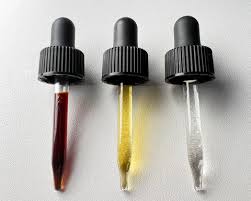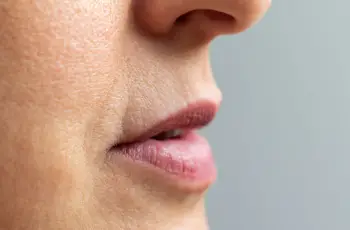
How Do I Know If My Vitamin C Serum Is Oxidized?
Vitamin C has long been hailed as one of the most powerful ingredients in skincare.
Its ability to brighten dull skin, reduce dark spots, and provide essential antioxidant protection has made it a staple in many skincare routines.
However, like any skincare ingredient, vitamin C has a shelf life, and over time, it can lose its potency. When this happens, your serum may no longer deliver the same skin benefits.
The oxidation process, in which vitamin C degrades due to exposure to light, air, or heat, is often to blame.
So, how can you tell if your vitamin C serum has gone bad?
In this guide, we’ll explore how to spot an oxidized vitamin C serum, how it impacts your skin, and what steps you should take if you find that your serum has expired.
What Happens When Vitamin C Serum Oxidizes?
Vitamin C, also known as ascorbic acid, is highly sensitive to environmental factors. Exposure to oxygen, light, and heat causes it to break down over time.
This breakdown, known as oxidation, leads to a gradual reduction in the serum’s effectiveness.
The more air your serum is exposed to, the faster it will oxidize.
Oxidation renders the vitamin C less potent, meaning it will no longer perform its role of protecting the skin from free radicals and environmental stressors.
In some cases, it could even harm your skin if used after it has oxidized.
How Can You Tell If Your Vitamin C Serum Is Oxidized?
Luckily, identifying an oxidized vitamin C serum isn’t difficult. Several noticeable signs can clue you in that your serum has expired.
1. Color Change
The easiest way to detect oxidation in vitamin C serum is by its color. Fresh vitamin C serums are typically clear or pale yellow, but when they oxidize, they gradually change into darker hues.
If you notice your serum turning a deep yellow or brown, this is a clear sign of oxidation. A fresh serum will never be orange or brown in color.
A bright yellow or orange tint is a dead giveaway that the serum is no longer at its best.
2. Smell
A fresh vitamin C serum has a slightly tangy or citrus-like scent. If your serum begins to smell sour, rancid, or off in any way, it’s likely that oxidation has occurred.
The sour odor is a direct result of the breakdown of the vitamin C.
3. Texture
In some cases, you may notice a change in the serum’s texture. Oxidized vitamin C serums can sometimes feel thicker, stickier, or more viscous when applied to the skin.
While this isn’t always the case, it’s a good indicator that your serum may no longer be effective.
If the serum feels different from when you first opened it, it’s worth considering whether oxidation has taken place.
4. Packaging
Packaging plays a big role in preventing oxidation. Vitamin C serums are usually packaged in dark-colored, opaque bottles to shield the product from light.
If your serum is in a clear bottle, or you notice that the product has been exposed to light for extended periods, it may have oxidized faster than it would have otherwise.
What Does an Oxidized Vitamin C Serum Do to the Skin?
Using an oxidized vitamin C serum may not cause immediate harm, but it can lead to various skin issues over time. Here’s what happens when you apply an oxidized serum to your skin:
1. Loss of Effectiveness
Once vitamin C oxidizes, it turns into a compound called erythrulose, which is often used in self-tanning products.
While erythrulose is safe in the right context, it’s not the ingredient you want in your vitamin C serum.
As a result, your serum will no longer offer the brightening, anti-aging, and antioxidant benefits it once did. Without the active vitamin C, your skin won’t see the rejuvenating effects it used to experience.
2. Potential Skin Damage
When vitamin C breaks down into erythrulose, it can also cause an increase in free radicals on the skin. Free radicals are unstable molecules that damage skin cells and accelerate the aging process.
This can result in more fine lines, wrinkles, and general skin aging. Furthermore, an oxidized serum could lead to skin irritation, redness, or breakouts, especially if your skin is already compromised.
3. Ineffective Anti-Aging Benefits
One of the primary benefits of vitamin C is its ability to stimulate collagen production and fight fine lines and wrinkles. However, an oxidized serum won’t have this effect on your skin.
Without the full power of vitamin C, your anti-aging routine will be less effective, and you may notice a slower improvement in skin texture and firmness.
What Should a Vitamin C Serum Look Like?
To ensure you’re using a fresh and effective vitamin C serum, it’s important to know what the product should look like when it’s in its prime.
1. Clear to Light Yellow
A high-quality vitamin C serum should be clear or a light yellow color. This indicates that the serum is fresh, and the vitamin C concentration is still potent.
It’s worth noting that some formulations contain added color to create an orange hue, but this is often just for marketing purposes and doesn’t necessarily indicate the potency of the vitamin C.
2. Opaque, Airtight Packaging
Vitamin C is highly sensitive to light and air. To protect it, you should always choose serums that come in opaque or dark-colored bottles. This prevents UV light from breaking down the vitamin C.
Additionally, the packaging should be airtight to limit the exposure of the serum to oxygen, which speeds up oxidation.
Can an Oxidized Vitamin C Serum Still Be Used?
While it’s technically safe to continue using an oxidized vitamin C serum, it’s not recommended for optimal skincare results.
The serum will still provide some benefits like hydration and lightening, but its effectiveness will be compromised.
Moreover, if the serum has turned brown, it could irritate the skin, causing redness or breakouts, and it will not provide the full brightening, anti-aging, or antioxidant benefits it once did.
What If My Vitamin C Serum Has Turned Brown?
If you discover that your serum has turned brown or shows significant color changes, it’s a clear sign that the vitamin C has oxidized. Here’s what you should do:
1. Discontinue Use
The best course of action is to stop using the oxidized serum. It’s no longer effective, and continuing to use it could harm your skin. Invest in a new bottle to enjoy the full benefits of vitamin C.
2. Don’t Try to Salvage It
Oxidation is a chemical process that cannot be reversed. No amount of shaking, adding more product, or refrigerating the serum will restore its effectiveness.
Once oxidation has occurred, the product is no longer good for use.
How Long Does Vitamin C Serum Last?
The shelf life of a vitamin C serum is typically around three months after opening. After this period, you may start to notice signs of oxidation such as a color change or loss of potency.
However, if you store your serum in a cool, dark place and make sure the bottle is tightly sealed, you might be able to extend its shelf life slightly.
Regardless, if it’s been more than three months since you opened your vitamin C serum, and you notice any signs of oxidation, it’s time to replace it.
Can You Use Vitamin C Serum Every Day?
Yes, vitamin C serum can be used every day! In fact, it’s a great addition to your morning skincare routine due to its ability to protect the skin from environmental stressors like UV rays, pollution, and free radicals.
1. Morning Application
Vitamin C works best in the morning because it helps combat free radicals produced by sun exposure. When paired with sunscreen, it provides enhanced protection against UV rays.
2. Night Use
Some people also use vitamin C serum at night to take advantage of its skin-repairing properties. Applying it before bed gives the active ingredients time to work without interference from environmental stressors.
When Should You Throw Away Your Vitamin C Serum?
If your vitamin C serum shows any of these signs, it’s time to discard it:
1. Change in Color
The most obvious sign that your serum has expired is when it starts to turn yellow or brown. This is a clear indicator that the vitamin C has oxidized.
2. Smell or Texture Changes
If the serum begins to smell sour or has a sticky, strange texture, it’s no longer good to use.
3. The Three-Month Rule
If your serum has been open for more than three months and hasn’t been stored properly, it’s time to replace it with a fresh bottle.
Key Takeaways: How to Care for Your Vitamin C Serum
To get the best results from your vitamin C serum, follow these tips:
Look for clear or light yellow serums to ensure they’re fresh.
Store your serum in a cool, dark place, and make sure the bottle is airtight.
Regularly check for color or smell changes as signs of oxidation.
Use it daily, especially in the morning, to protect your skin from free radicals.
Replace your serum every three months for optimal potency.
By following these simple steps, you can keep your vitamin C serum working at its best, helping your skin stay radiant, youthful, and protected from the signs of aging.


